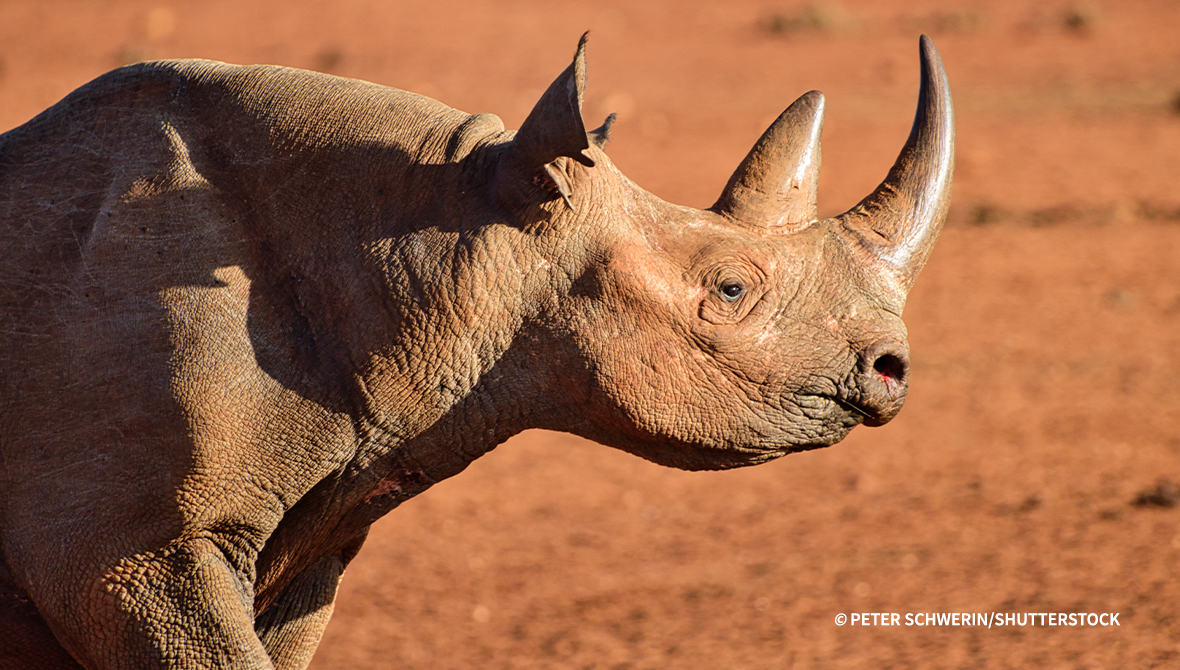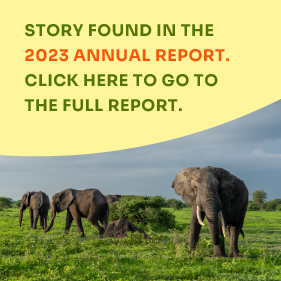Species Action Plans Aid Recovery of Black Rhino and Maasai Giraffe in Kenya

Kenya aims to grow a national population of 2,000 black rhinos by 2026. At a growth rate of over 5% each year, the population is on track.
The Tsavo-Mkomazi landscape is home to elephants, lions, giraffes, rhinos, and other key species. Infrastructure development, climate change, and fresh water availability are threatening wildlife habitat and creating competition for resources between wildlife and the people who live there.
The black rhino is of particular concern—its national population in Kenya declined from around 20,000 in 1970 to fewer than 400 in the mid-1980s. Today, the population has more than doubled, and strongholds like Tsavo-Mkomazi are critical to their continued recovery.
On the Kenyan side, Tsavo is home to nearly one-fifth of the country’s black rhino population, making it a crucial area for the critically endangered species. In mid-2022, AWF helped develop Kenya’s Black Rhino Action Plan, the official government strategy for conserving the species. It targets a national population of 2,000 by 2026. At a growth rate of over 5% each year, the population is on track to reach that target.
In some areas, success creates new challenges. The rhinos in Tsavo's Ngulia Rhino Sanctuary, which AWF helped to establish, have exceeded their ecological carrying capacity, meaning their population has grown as much as the current habitat can support. To address this, plans are underway to relocate the extra rhinos to other conservation areas. The landscape is also one of the Maasai giraffe’s last strongholds. Starting in the 2010s, poaching and habitat loss quickly began to put them at increased risk. Hunters in the area refer to giraffes as “motorbikes” because just one poached animal is worth up to US $700—enough to buy a motorbike. In 2016, the International Union for Conservation of Nature listed giraffes as vulnerable, and then upgraded their listing to endangered in 2018. Since 2018, AWF has worked with the Kenya Wildlife Service on a Species Recovery and Action Plan for Kenya’s giraffes, equipping rangers, creating awareness for conservation in schools, supporting infrastructure for wildlife authorities, developing land-use plans, and carrying out ecological monitoring.
In FY23, AWF trained a rapid response unit from the Kenya Wildlife Service to address wildlife crimes and supported scouts in carrying out patrol operations and collecting data on wildlife crimes. Over hundreds of patrols, scouts covered more than 3,000 kilometers. Though one giraffe was found killed for bushmeat on the Tanzanian side, there was no poaching on the Kenyan side, and the population AWF was monitoring increased overall.
